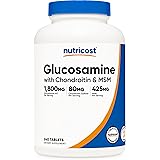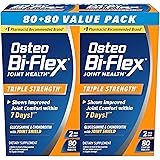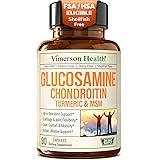Understanding Joint Health
What Are Joint Supplements?
When we think about joint health, supplements play a big role in keeping things moving smoothly. Joint supplements usually contain a mix of ingredients like glucosamine, chondroitin, and omega-3 fatty acids that are believed to help with joint pain and stiffness. In my journey of discovering what really helps my joints, I found that understanding what these ingredients do is crucial.
For instance, glucosamine is a natural compound found in cartilage. It helps to maintain the integrity of cartilage, making it a popular choice among those suffering from arthritis or age-related joint issues. Chondroitin also promotes joint elasticity and can help cushion the joints. These components often work hand in hand, and it’s essential to know their roles when picking a supplement.
Moreover, omega-3 fatty acids are fantastic for reducing inflammation in the body, which in turn can lessen joint pain. There are various forms of omega-3, such as those from fish or flaxseed. Knowing the main players in joint health has really opened my eyes when selecting the right product. Trust me, a little insight can go a long way!
Assessing Your Needs
Identifying Your Specific Joint Issues
Not all joint issues are created equal! Before you jump into the supplement world, it’s important to assess your specific needs. Are you dealing with occasional aches after a workout, or are chronic pains making everyday activities tough? Understanding the severity and type of your joint issues can guide you toward the supplement that suits you best.
I’ve experienced both types of discomfort over the years, and I can tell you that my needs changed with my activities. After intense workouts, I found that using a supplement with anti-inflammatory ingredients became vital. But when I had persistent pain, I turned to joint-supporting ones that focused on long-term repair.
Furthermore, age plays a significant role as well. An older friend of mine started seeking supplements that are more focused on long-term joint support than just addressing temporary pain. So take your time; listen to your body, and get a clearer picture of what you’re tackling before making your choice.
Researching Quality Ingredients
What to Look for in a Supplement
Now, this part can feel a bit overwhelming, but let me break it down! When you’re checking out supplements, you want to hunt for high-quality ingredients with good efficacy studies backing them up. It’s not just about picking the first thing off the shelf that claims to help. I’ve learned the hard way, trust me!
The Best Joint Support (Naturally) Starts with Organic Nutritional Support!
Get 40% Off Here ...
Look for supplements that have undergone third-party testing. This means they’ve been evaluated by an independent organization that ensures what’s on the label is actually in the bottle. That gives me peace of mind knowing that I’m investing in something reliable.
Moreover, consider how well-absorbed these ingredients are. Some forms are better absorbed by the body than others. For example, a supplement that uses a highly bioavailable form of glucosamine might give you better results than its lesser counterpart. Don’t shy away from doing a little homework – it pays off!
Choosing the Right Form of Supplement
Pills, Powders, or Liquids?
There are different forms of joint supplements, and honestly, it comes down to your personal preference. I’ve tried capsules, powders, and even liquid forms, and each comes with its perks. Capsules are super convenient for on-the-go folks, like me. Just pop them in, and you’re good to go!
On the other hand, powders can easily be added to smoothies or shakes, making it easier to incorporate them into your daily routine. For instance, I like to add a collagen powder to my breakfast smoothie – it’s like a double whammy for my joints and skin! If you’re not a fan of swallowing pills, powders can be a fun alternative.
Liquids tend to have faster absorption rates, which can be beneficial if you need something that kicks in quickly. I’ve experimented a bit and found that choosing a form I enjoy using makes me stick with a routine better. So pick what feels right to you!
Monitoring Your Progress
How to Track the Benefits Over Time
After you’ve chosen a supplement, it’s crucial to monitor how it affects your joints over time. Keep a journal or use an app to log your discomfort levels and any changes you experience. I started doing this a couple of years ago, and it’s incredibly enlightening! You might notice patterns you didn’t realize before.
Additionally, it’s essential to be patient. Sometimes the best results take a few weeks or even months to surface. I remember feeling bummed when things didn’t change overnight, but sticking with it really paid off in the long run.
Lastly, don’t hesitate to adjust your routine if you don’t notice any changes after a reasonable period. I’ve switched supplements a few times until my joints felt more flexible and less painful. Listen to your body and don’t be afraid to make changes!
FAQs
1. How long does it take to see results from joint supplements?
It varies from person to person. Some might experience relief within a few weeks, while others could take several months. Patience is key!
2. Are there any side effects from joint supplements?
Most joint supplements are safe, but some people may experience mild gastrointestinal discomfort. Always start with a lower dosage to see how your body reacts.
3. Can I take joint supplements with other medications?
It’s always wise to consult with your healthcare provider, especially if you’re on other medications or have underlying health conditions.
4. Are there natural food sources for joint health?
Definitely! Foods rich in omega-3 fatty acids (like fish and flaxseeds), antioxidants (like berries and leafy greens), and vitamin D are great for joint health.
5. How do I know if a supplement is high quality?
Look for third-party testing, good reviews, and ingredients that are backed by scientific studies. Trust your intuition and do a bit of research!

























































